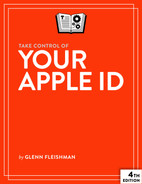- Read Me First
- Introduction
- Apple ID Quick Start
- Where to Log In with Your Apple ID
- Understand Your Apple ID
- Prevent Apple ID Problems
- Authenticate Your Apple ID Login
- Recover Your Account
- Sign In with Your Apple ID
- Manage Multiple Apple IDs
- Split or Migrate Apple IDs
- Share with Your Family
- Subscribe to Services
- Cope with a Hack of Your Apple ID Account
- Solve Common Problems
- About This Book
- Copyright and Fine Print
Share with Your Family
Family Sharing is Apple’s sometimes awkward attempt to let multiple people in a family group share digital items and subscriptions the way one would in a household. Apple IDs—specifically, those used with iCloud—are the binding force in a family group.
Family Sharing includes a large grab bag of things:
App purchases (see sidebar below)
In-app purchases and in-app subscriptions (see sidebar below)
Media purchases, including music, movies, and TV shows
Pooled storage in iCloud+ (semi-optional; explained in detail later)
Location of all your devices that have Find My enabled
Your location, defined by the iPhone or Apple Watch acting as a proxy for where you are
Add-on subscriptions, such as Apple Music and Apple One, which are available in individual and family flavors (see Subscribe to Services for more detail)
Family Sharing group members can split their Apple lives between iCloud and purchases within Family Sharing just as they can on all their Apple devices.
Apple defines a “family” has having no more than six members, including its creator—which irks people who have written to me with larger families (there’s no workaround).
Nonetheless, it’s a terrific feature when all the stars align and the set of features matches your family or household’s needs.
Enable Family Sharing
Family Sharing starts with an organizer, who initiates the process; let’s say that’s you for the purposes of this chapter.
Members take on one of three roles:
Adult accounts, which are for people 18 and older. The word “Adult” appears only in certain views for these accounts.
Parent/guardian accounts, which gives them control over children’s accounts, including approving purchases if the Ask to Buy feature is enabled (an organizers can switch adults to and from a parent/guardian status).
Children’s accounts, which apply to people under 18. Their age is displayed along with their account in the Family Sharing list, as well as whether Ask to Buy is enabled.
Before starting, make sure you have a valid, active, and preferred payment method in your Apple ID account.
Initiate Family Sharing
The method of setting up Family Sharing always happens on an Apple device, and it varies by platform and version:
In iOS/iPadOS, go to Settings > Account Name, tap Family Sharing, then tap Get Started and follow prompts (Figure 52).
In macOS, go to System Preferences > Family Sharing (Monterey) or System Settings >Family (Ventura or later), click Next, and follow prompts.
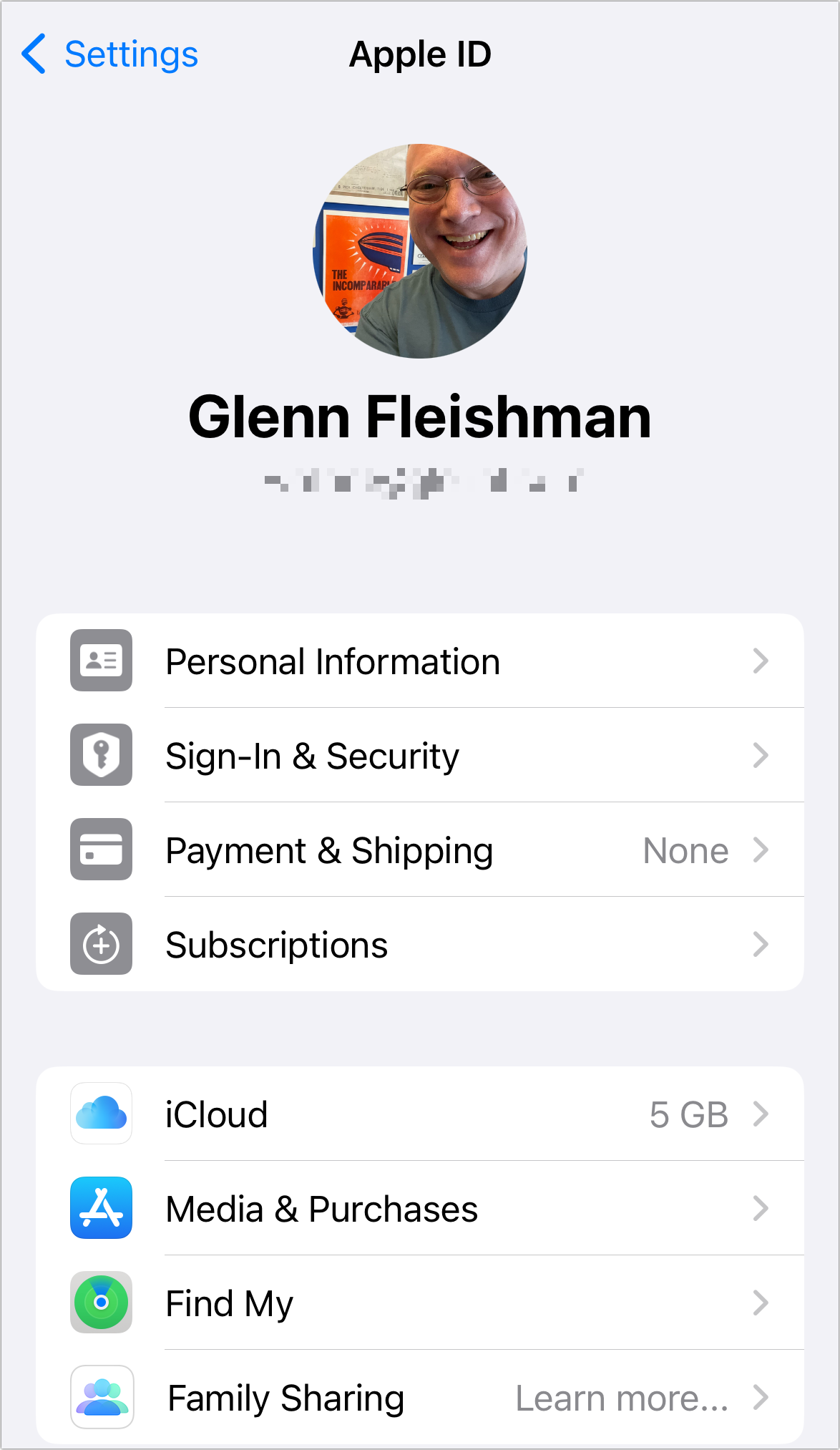
Figure 52: Start by setting up Family Sharing, here showing iOS’s account screen.
Check for iCloud and Purchases Accounts
If you have separate Apple ID accounts for iCloud and for purchases, Family Sharing should pick that up and uses the iCloud account for managing the Family Sharing group and the purchases account for family purchases.
Without using the correct Apple ID for purchases, you can’t share your purchases with other Family Sharing members. You can check that this was set up correctly:
In iOS/iPadOS: Go to Settings > Account Name > Family Sharing. Your iCloud-connected ID should appear next to Apple ID and your purchases account next to Purchases. Tap Purchases and enter a different Apple ID and password, then tap Use This Account to accept the change.
In macOS: Go to System Preferences > Family Sharing (Monterey) and click Details next to your name or System Settings > Family (Ventura or later) and select your name. Apple ID at the top and Purchases & Subscriptions show the corresponding Family Sharing account and payment account. Click Edit, click Change, enter the correct Apple ID and password, click Next, and accept the change.
Invite Family Members
After “organizing” a family group, you invite family members to join by selecting suggested people, seemingly anyone with whom you share your location; or by entering their email address or starting to type their name, matching entries from your contacts (Figure 53). You can also use a Game Center nickname. Even if someone doesn’t have an Apple ID, they will receive an invitation and can create one to join.
You can also use the invitation process to create an account for a minor, who can then use it to join; you can create such an account in advance, too.
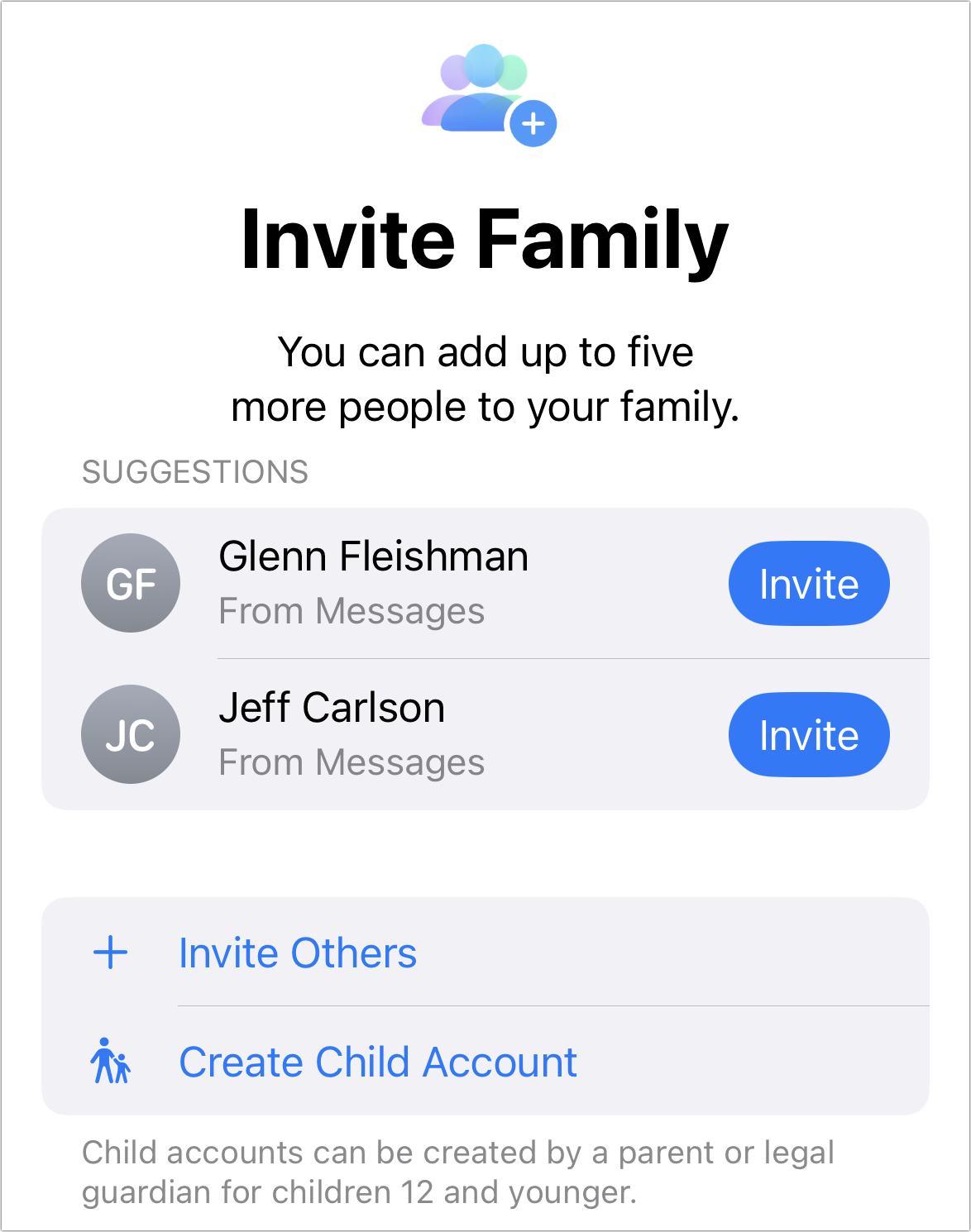
In iOS/iPadOS, go to Settings > Account Name > Family Sharing. Tap Add Member. Tap Invite People to enter an email address or tap Create an Account for a Child. If you tap Invite People, you can then pick a method to send an invitation, including via AirDrop, email, or Messages. You can also tap Invite in Person, and then hand your device to the invited party to enter their account information (Figure 54).

In macOS Monterey, go to System Preferences > Family Sharing and click the plus ![]() icon. In Ventura or later, go to System Settings > Family and click Add Member. Pick whether to invite directly or create a child’s account. If you pick the former, you can opt to let someone enter their account name and password (Invite in Person), or you can email them an invitation.
icon. In Ventura or later, go to System Settings > Family and click Add Member. Pick whether to invite directly or create a child’s account. If you pick the former, you can opt to let someone enter their account name and password (Invite in Person), or you can email them an invitation.
If someone enters their Apple ID account credentials, they’re immediately added. When they receive an invitation, they can follow the link to sign up (Figure 55).
Only Apple ID accounts that have been used for iCloud purposes appear to be eligible. That is, you need to have logged in to an iPhone, iPad, Mac, or iPod touch with that Apple ID as your iCloud account for Apple to accept it as a new Family Sharing member. (In fact, in testing, it appears as if the account needs to currently be associated with an Apple device, too.)
If you use the account solely for purchases, you almost certainly can’t add it as a Family Sharing member, even though you can share purchases made by it among family members.
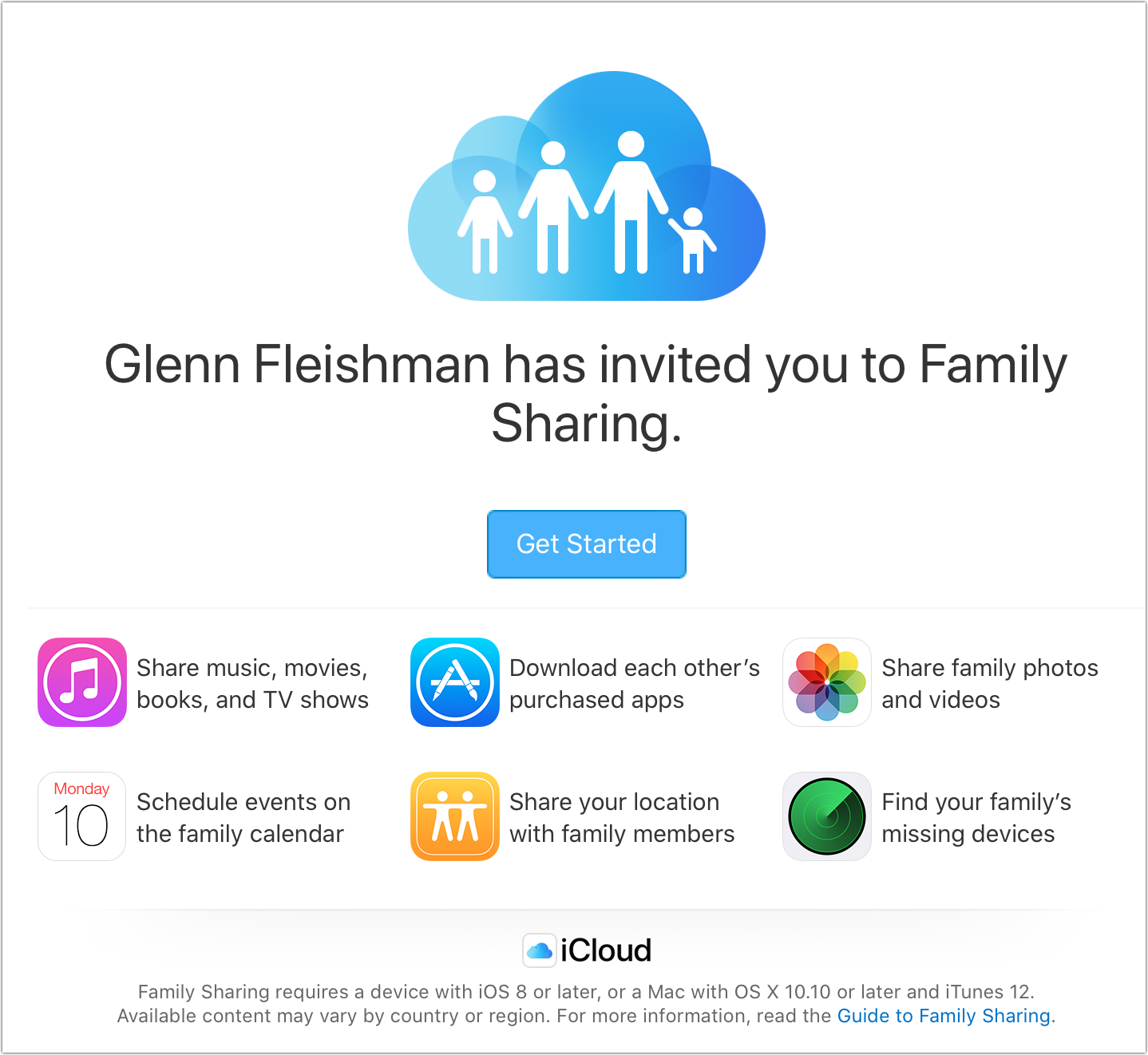
Family Members Take Actions
Once someone is part of a family group, they have a variety of actions they can take within the family group.
Nearly all personal controls are found in Family Sharing in the respective operating system: Settings > Account Name > Family Sharing in iOS/iPadOS, System Preferences > Family Sharing in macOS Monterey, or System Settings > Family in Ventura or later.
You can see the current state of and make changes across many kinds of shared items:
Share your app and media purchases—or disable sharing
Disable shared payment (organizer only, who disables purchase sharing on their account to make this happen)
Share a 200 GB or 2, 6, or 12 TB iCloud+ subscription with the group
Stop using your own iCloud+ subscription, and use the pooled 200 GB or 2, 6, or 12 TB group subscription
Stop or start sharing your location
You can also subscribe to an Apple service family plan that everyone shares through any app or Apple website that allows starting a subscription—like Music, tv.apple.com for Apple TV+, or News+. These subscriptions appear in Family Sharing and note the subscriber, but you initiate and manage them elsewhere. You can view a list of subscriptions available to each family member and who the subscribing person is (Figure 56).
While family subscriptions are automatically available for all group members, purchases have to be downloaded or accessed separately in every digital store. In the Purchased view or page in any store—App Store, Books, and Music—and you can see purchases by other family members. In some places, you see a list of members; in others, it’s a menu from which you can select a name. You can then click to download any available item.
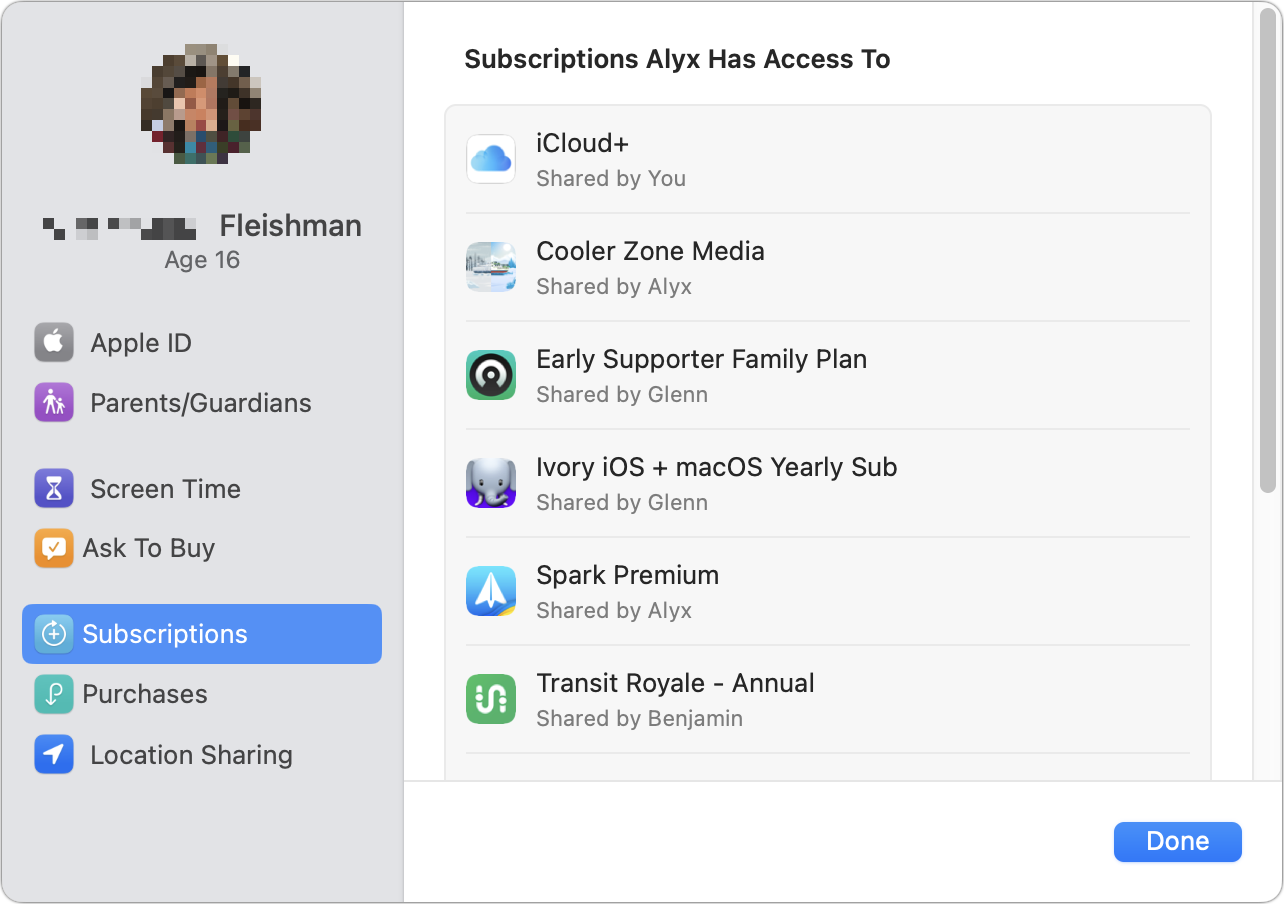
Parent/guardian accounts and the organizer can also use the Apple Pay item in Family Sharing in iOS/iPadOS to add cash to balances for child accounts, or use the Ask To Buy item to control whether child accounts have to seek permission before a purchase is completed on any of their devices. (In macOS, a user with permission can modify Ask to Buy by selecting the child user in the Family Sharing list and selecting or deselecting the Ask to Buy checkbox.)
Review Family Subscriptions
Apple offers several kinds of subscriptions, described in the next chapter, that have a variety of pricing that is intended for individuals or families:
Apple Music: You can subscribe as an individual, as an individual within a Family Sharing plan (including the special higher-education student discount), or as a Family. The price is different for individuals and Family Sharing.
TV+, News+, and Arcade: These services are available at the same monthly price whether you have an individual Apple ID account or are part of a Family Sharing group.
iCloud+ storage: iCloud+ storage (and included services) can be shared at all tiers for the same price as if it were paid by an individual. In the United States, the 50 GB, 200 GB, 2 TB, 6 TB, and 12 TB tiers are $0.99, $2.99, $9.99, $29.99, and $59.99 a month, respectively. The storage is private for each user. Each member of a family group can choose instead to have their own iCloud or iCloud+ plan, which can be more affordable if they need very little storage.
Apple One: This new bundled service comes in three tiers. One is for individual, but it has two for families: one called Family, slightly more than the individual plan; and Premier, which is the same price for an individual or a Family Sharing group. Both include nearly all subscription services—except iTunes Match, next—and iCloud+.
iTunes Match: While you don’t need iTunes Match if you have an Apple Music subscription, it’s available only as a $24.99 per year individual add-on. If you don’t have Apple Music, each family member who wants it has to subscribe separately.
Manage Family Members as Organizer
Visit the appropriate place in your operating system to see the Family Sharing list. Each person has an entry plus some additional labels, like Parent/Guardian, Ask to Buy, an age, and so on.
Tap the person’s name in iOS/iPadOS, or click Details next to their name (Monterey) or select their name (Ventura or later) to review associated information and to make changes. (Figure 57).
Each member has associated information that you see in the main view or when drilling down as above with some variations by version of macOS, as noted:
Apple ID: The account used for that person’s participation in the group is shown. It can’t be changed by them or the organizer.
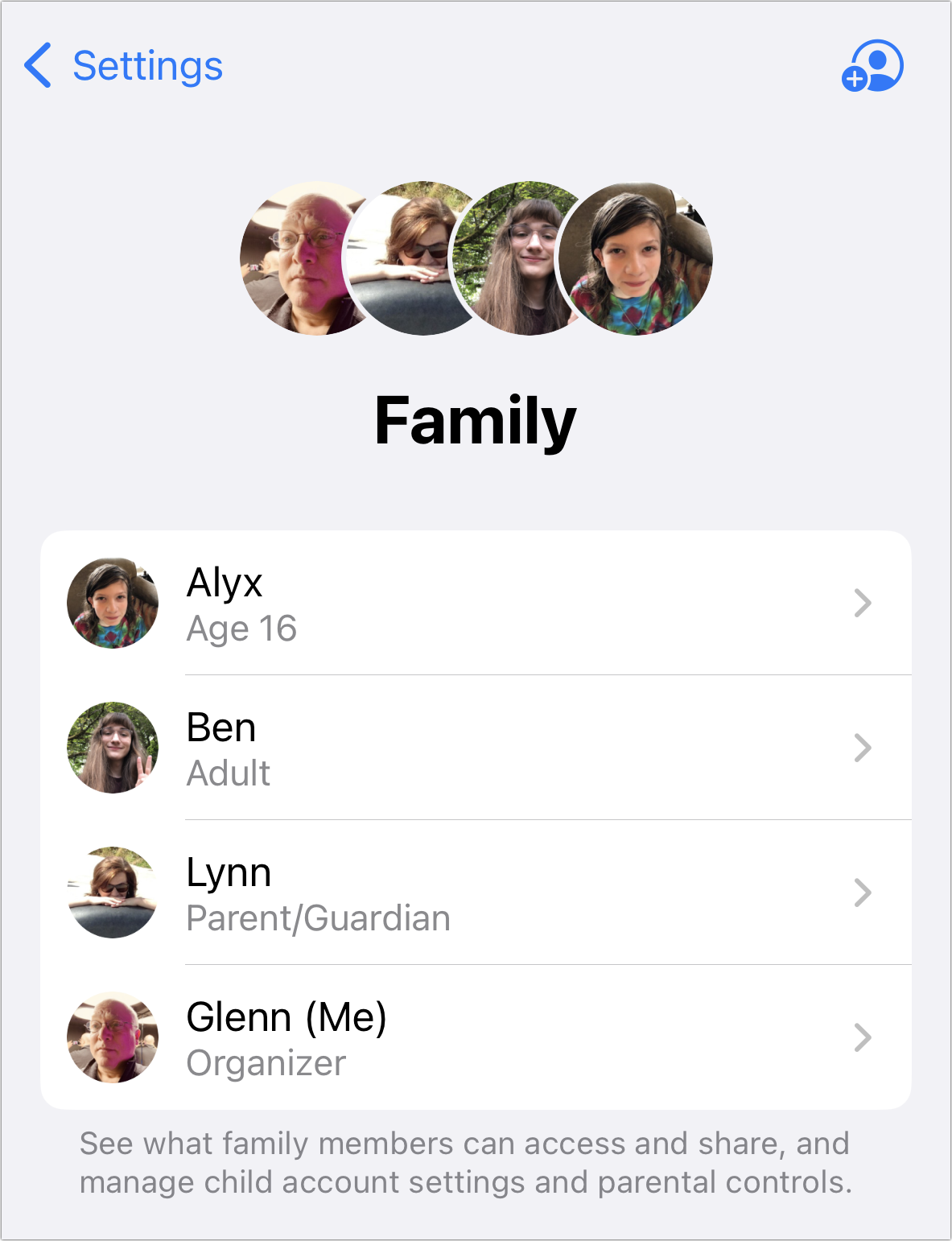
Figure 57: Family Sharing shows a list of members and their characteristics, like age or role. (iOS 16 shown here.) Purchases (Monterey and earlier)/Purchases & Subscriptions (Ventura or later): The Apple ID associated with purchases for that user appears. Only the user can change that on their devices. (See Check for iCloud and Purchases Accounts, earlier.)
Age: Each member who is 18 years old or younger has their age displayed.
Role: The organizer can view and change roles available for each person within certain parameters. A Parent/Guardian can be set to an Adult and vice versa.
Person has access to (Monterey and earlier): A list of subscriptions services that are part of the family group are shown.
Subscriptions (Ventura or later): Click Subscriptions in the person’s sidebar to see Subscriptions Person Has Access To as a list.
An organizer can remove family members in these ways:
In iOS/iPadOS, select the family member and tap Remove Name from Family, then confirm.
In macOS Monterey, select the family member and click the minus
 icon, then confirm. Or click Details next to the family member’s name and click Remove Name and confirm.
icon, then confirm. Or click Details next to the family member’s name and click Remove Name and confirm.In macOS Ventura or later, select the family member and click Remove Name from Family, then confirm.
Turn Off Family Sharing
An organizer can disable Family Sharing and then all shared assets across accounts are no longer available to other members. This includes purchases and subscriptions.
Turn off Family Sharing anywhere you could enable it in these ways:
In iOS/iPadOS, go to Settings > Account Name > Family Sharing > organizer name and tap Stop Family Sharing and then confirm.
In macOS Monterey, open System Preferences > Family Sharing, click Turn Off, and confirm.
In macOS Ventura or later, go to Settings > Family, select your entry, click Stop Using Family Sharing, and confirm.
-
No Comment
